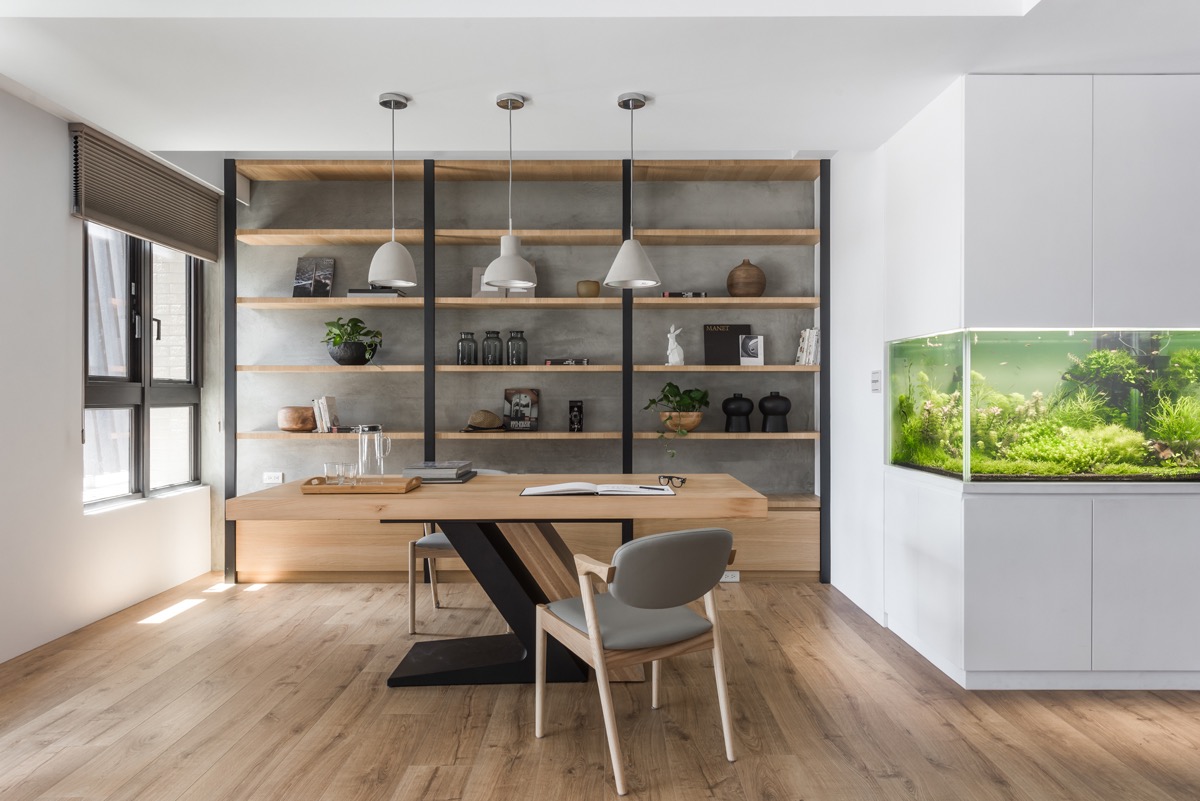Freelancing is when you work from home in pajamas. That’s how it’s supposed to be, but it’s a little more complicated. Taking a laptop and laying in bed is great, but it knocks down all the deadlines. And what will add productivity and, moreover, will please the eye, we tell below point by point. From portable desks to lighting, smart design solutions can help make working from home more organized, productive and enjoyable.
Many are now working from home. If earlier the design of the home workspace was not so important, now this topic has become very relevant. Simple but thoughtful interior solutions will allow you to increase the space and facilitate the work process. Here are some basic tips:

1. Proper furniture and lighting
First of all, find the perfect desk – comfortable in height and width. When choosing a place for it, make sure that when you work, you or your monitor do not block the light from the window. Next – a chair with good support for the spine or complete with a special pillow. Now lighting. It is important to combine natural, ceiling or wall, plus desktop. It is especially good if the table lamp is adjustable according to the degree of light power.
2. Calm base color
Gray, beige or ivory are the most successful shades for a mini-office. They visually enlarge the space and reflect natural light from the windows. Bright colors are best left for details, like the mood board and stationery on the table.
3. Houseplants
Plants in the interior of a home office are not just decoration. They improve the microclimate and allow our eyes to rest from the screen light – just look at it for a couple of minutes. And pleasant shades of green have a beneficial effect on the nervous system, soothe and relieve tension. Some pluses.
4. The right desktop
When choosing a computer table, keep in mind that such tables are not a kind of desk. There are no less differences between written and computer than, for example, between lunch and magazine. Computers are designed in such a way as to accommodate all the equipment as conveniently as possible and provide comfort to the user.
First, decide on the dimensions of the workplace: measure all the computer equipment, the width of the doorway, and, if necessary, the length of the section of the room where the table will stand. This will help you understand what form of computer desk is best for your needs, and whether it is necessary to order computer furniture in disassembled form.
The optimal position of the monitor on the table is at arm’s length from the eyes, and slightly below, so that the gaze of the person working at the computer is directed to the ground. Any pedestals and shelves for the monitor negatively affect vision.
From portable home office desks to lighting, smart design solutions can help make working from home more organized, productive and enjoyable.
Many are now working from home. If earlier the design of the home workspace was not so important, now this topic has become very relevant. Simple but thoughtful interior solutions will allow you to increase the space and facilitate the work process. Here are some basic tips:
5. Aroma candles
One or several wax candles are a small and incredibly pleasant accessory that contains so much comfort and mood! Their light fragrance will help you relax a bit and survive the most terrible deadlines without stress.
6. Moodboards and decor
A mood board with illustrations, Pantone palettes or fabric samples for a new collection is a great thing for a person with a creative profession. If you don’t need to keep pictures in front of your eyes directly for work, then draw up an inspirational card with goals for the coming year. There may be a photo of your dream home or a wish-list of cities for future travel. Plus – a couple of decorative little things to suit the mood. In such an environment, you will want to create and dreams will quickly become a reality – we tell you for sure!
7. Lighting installation
The new trend is obvious: lighting should be focused on the workplace. This calls for a wider implementation of individual lighting control and leads to the active use of so-called “two-component” systems, which provide individual control of workplace lighting in combination with general, ambient light.
If we formulate the basic requirements for modern lighting, then these are:
- action functionality and improved light comfort;
- giving the best conditions for visual work;
- individual control of workplace lighting;
- the ability to select the required lighting of the surrounding space, taking into account the lighting of the workplace and the presence of daylight;
Workplace lighting requires a higher light level and a lower level for the intermediate zone.
